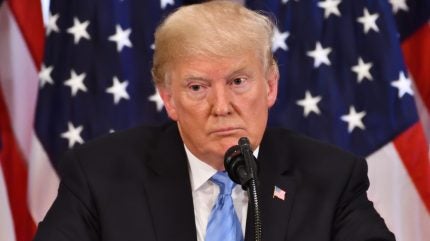US Tariffs — Understanding Trump’s side of the story

US TARIFFS — UNDERSTANDING TRUMP’S SIDE OF THE STORY
The
Trump administration says tariffs are needed to protect US industry, reduce
trade deficits and create a fairer global trading system.
As of April 2025, tariffs remain a defining feature of Donald Trump’s second term in the White House. His trade policy, carried over from his first term, continues to rely on tariffs as a central tool to protect American industries and reduce the trade deficit.
Critics at home and abroad warn of rising
prices, damaged international relations and economic uncertainty, but Trump and
his team argue the opposite: that tariffs are a necessary correction after
decades of trade imbalances.
The former businessman-turned-president sees
the global trading system as skewed against the United States, particularly by
countries such as China, which he accuses of undercutting American workers
through unfair practices.
His administration has said the aim is to restore balance, defend national
security, and bring manufacturing back to US soil.
This article outlines the reasoning behind
Trump’s tariff policy from the viewpoint of his administration.
Defending domestic industry and jobs
The US government argues that foreign
competitors have gained unfair advantages through practices such as dumping,
subsidies and intellectual property theft. The administration says these
tactics have led to the loss of American jobs and the decline of industries
once seen as the backbone of the economy.
In 2018, tariffs were introduced on steel
and aluminium using a legal provision tied to national security. This led to a
significant reduction in imports — steel by 24% and aluminium by 31%, according
to the US International Trade Commission.
In response, domestic production increased
slightly, with steel up by 2% and aluminium by over 3%.
The administration points to this as
evidence that tariffs can revive critical industries and reduce reliance on
foreign supply chains. However, the policy came with drawbacks.
The cost of steel and aluminium rose by 2.4%
and 1.6% respectively, driving up expenses for companies in sectors ranging
from construction to car manufacturing. As a result, downstream industries saw
a dip in output, estimated at $3.5bn in 2021.
Economic trade-offs and job costs
One of Trump’s major promises during both
campaigns was to bring manufacturing jobs back to the United States. Some
progress was made in the steel sector, with new jobs added, but the cost was
high.
Economists at the Peterson Institute for
International Economics calculated that each job created through steel tariffs
came at a cost of over $900,000 to businesses and consumers.
The figure highlights a difficult balance:
safeguarding one part of the economy can put pressure on others. While the
administration focused on long-term benefits and national resilience, critics
argue that these short-term trade-offs hurt more than they helped, especially
for small businesses.
Mixed results in reshoring
manufacturing
Beyond metals, the broader ambition was to
boost US manufacturing across the board. The White House hoped that tariffs
would push companies to move production back to the United States or at least
away from China.
There were isolated examples of companies
reshoring or shifting supply chains, but the overall impact was limited.
Modern manufacturing, heavily automated and
globally integrated, doesn’t always fit traditional ideas of factory work.
Labour costs remain a major hurdle — average annual pay for a US factory worker
is around $70,000, while in China it’s $13,000 and in India, closer to $2,000.
Even with tariffs, many firms continue to
find it more cost-effective to keep production abroad.
These challenges suggest that while the
political message of ‘Made in America’ remains powerful, the economic reality
is far more complex.
A policy still under debate
Trump’s defenders maintain that tariffs are
a necessary pushback against an unfair system. They argue that the policy is
not about isolationism but about fairness and strategic independence. The goal,
they say, is not to end trade, but to make it more reciprocal and to stop
relying on adversarial nations for key goods.
Still, tariffs remain controversial. US
allies have responded with their own tariffs, some trade relationships have
been strained, and global supply chains continue to shift in uncertain ways.
Yet for Trump’s supporters, tariffs
symbolise strength — a readiness to confront longstanding economic problems and
prioritise national interest.
Whether the policy achieves its long-term
goals remains to be seen, but it’s clear that for this administration, tariffs
are not just about trade — they’re about reshaping the global economic order on
America’s terms.
Some analysts argue that the tariffs are not
purely about protecting American industry, but serve as leverage in wider trade
negotiations. According to this view, Trump uses tariffs as bargaining chips —
temporary pressure points designed to extract concessions from trading
partners.
Whether the aim is better market access,
stronger intellectual property protections, or reshoring of supply chains, the
tariffs are seen as tools to force opponents to the negotiating table and
secure deals more favourable to US interests.
This approach reflects Trump’s broader
negotiating style: create disruption to gain advantage, then make a deal on his
terms.
In the end, only Trump knows his true
intentions. For now, the world is left watching— waiting to see how far he’s
prepared to push, and what outcome he’s really after.
By Just Style
